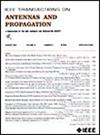Hybrid Physics-Data-Driven Neural Network for Accurate Modeling of Scattering Problems
IF 5.8
1区 计算机科学
Q1 ENGINEERING, ELECTRICAL & ELECTRONIC
引用次数: 0
Abstract
Data-driven deep learning techniques have made notable advancements in modeling electromagnetic (EM) scattering problems. owever, its accuracy on the testing dataset can be heavily reduced when data availability is constrained. To address the overfitting problem caused by limited data, we propose a novel hybrid physics-data-driven neural network (HPDNN), which incorporates both data loss and physical loss. Specifically, Maxwell’s equations are used as the physical constraint to evaluate the prediction accuracy of neural network (NN), and the physical loss is combined with the data loss in the backpropagation for extrapolation tasks. The results show that the proposed method can achieve accuracy enhancement up to 15.7% over the typical data-driven method, and the field profile of prediction can be significantly improved with the aid of physical constrain. Besides, this work reveals that the convergence speed and accuracy of HPDNN are better than those of purely physics-informed NN (PINN), exhibiting the importance of loss hybrid on accurate modeling of EMs.混合物理-数据驱动神经网络用于散射问题的精确建模
数据驱动的深度学习技术在电磁散射问题建模方面取得了显著进展。然而,当数据可用性受到限制时,它在测试数据集上的准确性会大大降低。为了解决有限数据导致的过拟合问题,我们提出了一种新的混合物理-数据驱动神经网络(HPDNN),该网络将数据丢失和物理丢失结合起来。具体而言,利用麦克斯韦方程作为物理约束来评估神经网络的预测精度,并将物理损失与反向传播中的数据损失结合起来进行外推任务。结果表明,与典型的数据驱动方法相比,该方法的预测精度提高了15.7%,并且借助物理约束可以显著改善预测的现场剖面。此外,本工作还揭示了HPDNN的收敛速度和精度优于纯物理信息NN (PINN),这表明损失混合对于准确建模EMs的重要性。
本文章由计算机程序翻译,如有差异,请以英文原文为准。
求助全文
约1分钟内获得全文
求助全文
来源期刊
CiteScore
10.40
自引率
28.10%
发文量
968
审稿时长
4.7 months
期刊介绍:
IEEE Transactions on Antennas and Propagation includes theoretical and experimental advances in antennas, including design and development, and in the propagation of electromagnetic waves, including scattering, diffraction, and interaction with continuous media; and applications pertaining to antennas and propagation, such as remote sensing, applied optics, and millimeter and submillimeter wave techniques

 求助内容:
求助内容: 应助结果提醒方式:
应助结果提醒方式:


